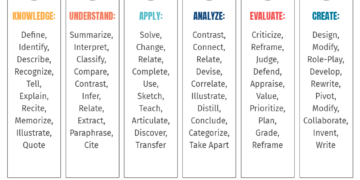What do you enjoy making by hand? Do you bake, embroider or draw? Create with wood, beads, leather, paper, yarn or metal?
When was the last time you made something, just for the fun of it?
For inspiration, take a look at a Times series called Art of Craft, which takes you inside the work spaces of specialists whose work rises to the level of art.
In the series so far, you can find people who blacksmith, blow glass, and sculpt nails, who make balloon art, piñatas, surfboards, lampshades, tissue paper banners, beadwork, tiny sculptures, cakes, guitars, violins, saddles, quilts, jewelry, embroidery and baskets.
For example, Mei Kawajiri, shown in the video at the top of this post, hand-paints and sculpts custom-designed nails. When she first came to New York City from Japan she was alone and spoke no English, and would walk miles with a portfolio of her designs looking for work. (In fact, she created 3-D croissant nails because she struggled to pronounce the word, and it was easier to just point at her nails when ordering at a cafe!)
Now, however, her nails are in great demand:
For at least a few days most weeks, Mei Kawajiri makes hotel calls to celebrities like Cardi B, Heidi Klum, Ariana Grande and Bad Bunny to whip up viral creations, often shared with her more than 343,000 Instagram followers. Her medium might be even more impressive: extravagant nail art — minutely detailed 3-D pastries, hand-drawn portraits of anime heroines and six-inch acrylics embedded with jewels and bits of lace.
Or, get to know the work of Leleo Kinimaka, who grew up in Hawaii and has carved out a career as a woodworker.
His creations — primarily the intricately designed surfboards known as alaia boards, which have been used by islanders to catch waves for centuries — both reflect his upbringing and celebrate his culture:
“When I make boards incorporating Hawaiian symbols and stories, that’s my absolute favorite,” Kinimaka said, admiring his handiwork. Running his fingers along the surface, he added: “See this curly golden grain here? That represents the god of the sea, Kanaloa. These triangles? They represent shark teeth, a symbol of power. The three diamonds intersecting here? That represents ohana — family.”
Here, you can watch him at work:
Or, read about Roberto Benavidez, who works with a traditional Mexican craft that much of the art world has been slow to recognize as anything but a children’s toy:
The piñata, because it’s made out of humble paper and designed to be obliterated, is not always thought of as art. The Los Angeles-based artist Roberto Benavidez has worked to change that.
“It is just this innocuous kids’ party game to many,” Benavidez said. “The piñata is so much more.”
Benavidez has transformed the traditional piñata into something much more elaborate, emulating birds and mythical creatures straight out of medieval artworks and texts. Inside his studio, there lives a menagerie of creations: A silver giraffe stands watch over a half-dozen exuberantly colored birds hanging from the ceiling. At his desk, Benavidez was busy working on a new addition to the flock: a blue Kingfisher.
Students, scroll through the Art of Craft series, read one or more articles in full, and then tell us:
Which of these stories or crafts interests you most? Why? What is impressive to you about it?
What do you make that brings you joy or satisfaction? If you don’t currently make anything, can you remember a time when you did? What do you get from crafting things with your hands that you may not get from other activities?
Is there a craft that you wish you could focus on so deeply that, like these specialists, your work could rise to the level of art?
What crafting traditions are there in your family? For example, maybe you have a grandparent or aunt or uncle who made furniture or wove blankets or was a metalworker. Is there anyone in your extended family who could teach you a craft of some kind?
What crafting traditions are a part of your ethnic, regional or religious heritage? What do you think those crafts can tell you about the culture that brought them about?
What, if anything, do you think is the difference between work that is considered “art” and work that is considered “craft”? Many of these articles allude to a line between the two. For example, in the story about the Indigenous beadworker Teri Greeves, we learn that even “as her own work is now in the collections of museums such as the Heard Museum in Phoenix, the Brooklyn Museum and the National Museum of the American Indian, Greeves identifies as her grandmother did: as a beadworker, not as an artist.” What, to you, separates art and craft? Why?
“Nails are such a powerful form of expression,” Kawajiri says — yet, like piñatas or beads or balloons, nails are not often thought of as art. What objects do you encounter every day — whether at home, in school, on the street, in stores or in terms of fashion — that strike you as a “powerful form of expression” that more people should notice and celebrate? What makes them interesting to you?
Students 13 and older in the United States and Britain, and 16 and older elsewhere, are invited to comment. All comments are moderated by the Learning Network staff, but please keep in mind that once your comment is accepted, it will be made public and may appear in print.
Find more Student Opinion questions here. Teachers, check out this guide to learn how you can incorporate these prompts into your classroom.




















